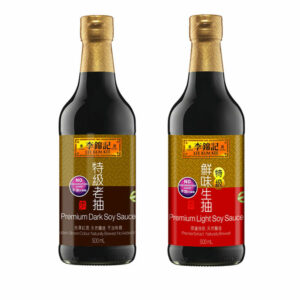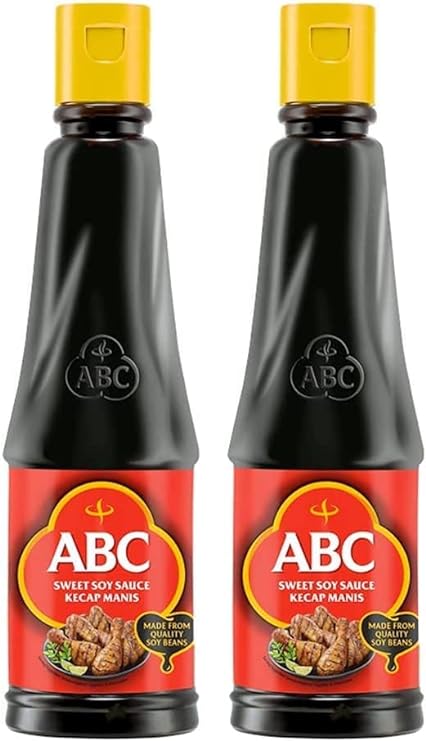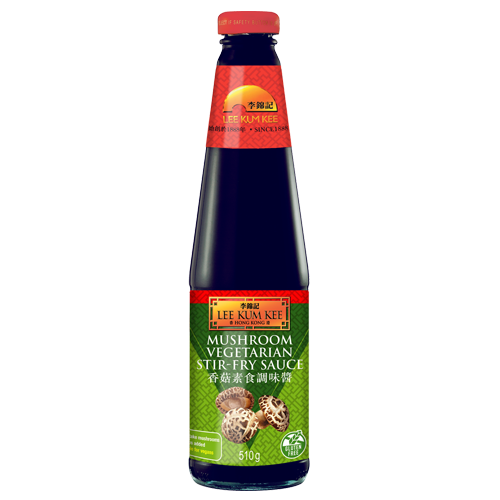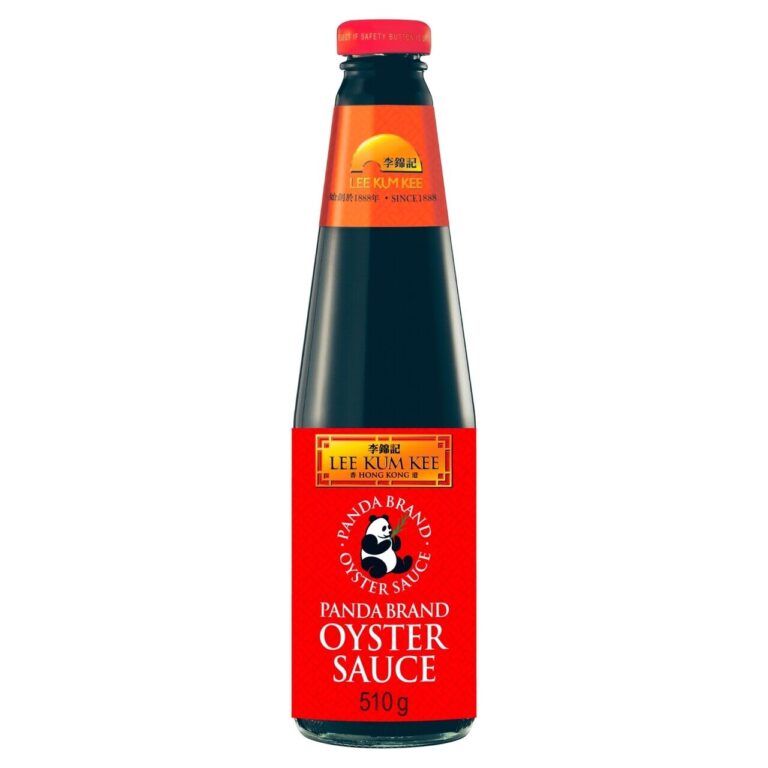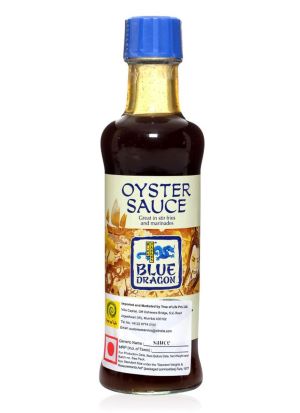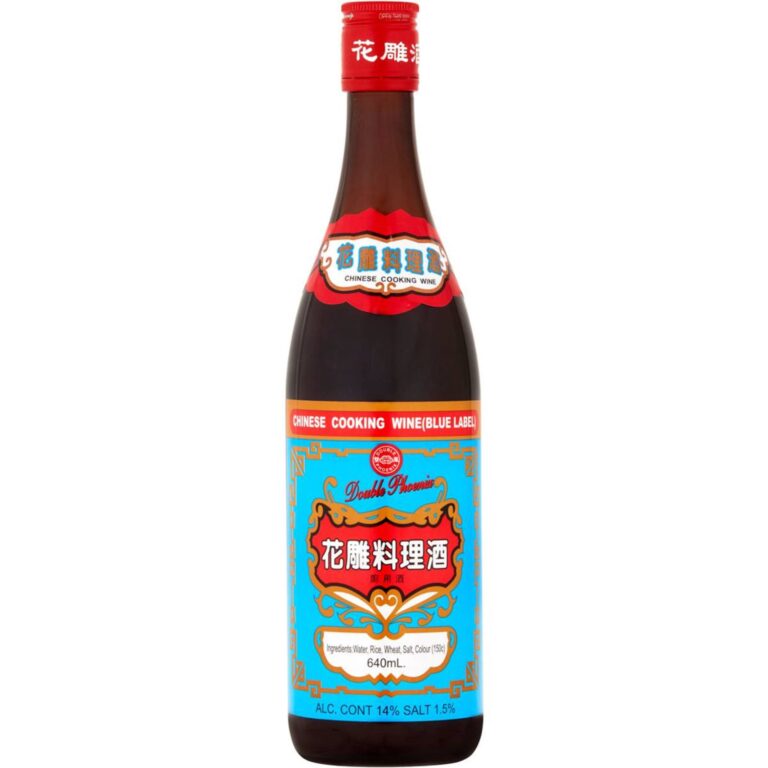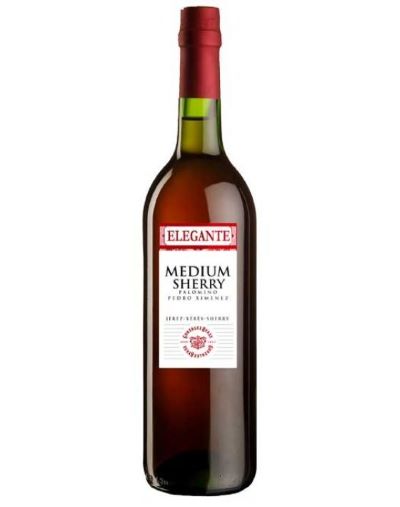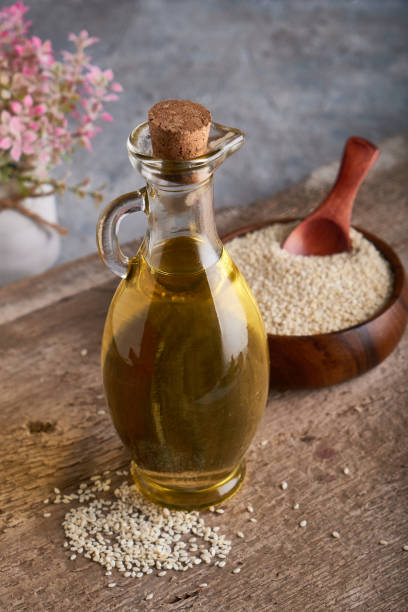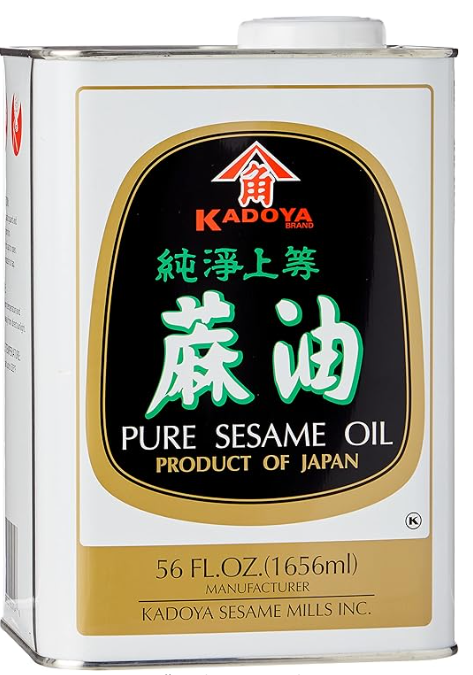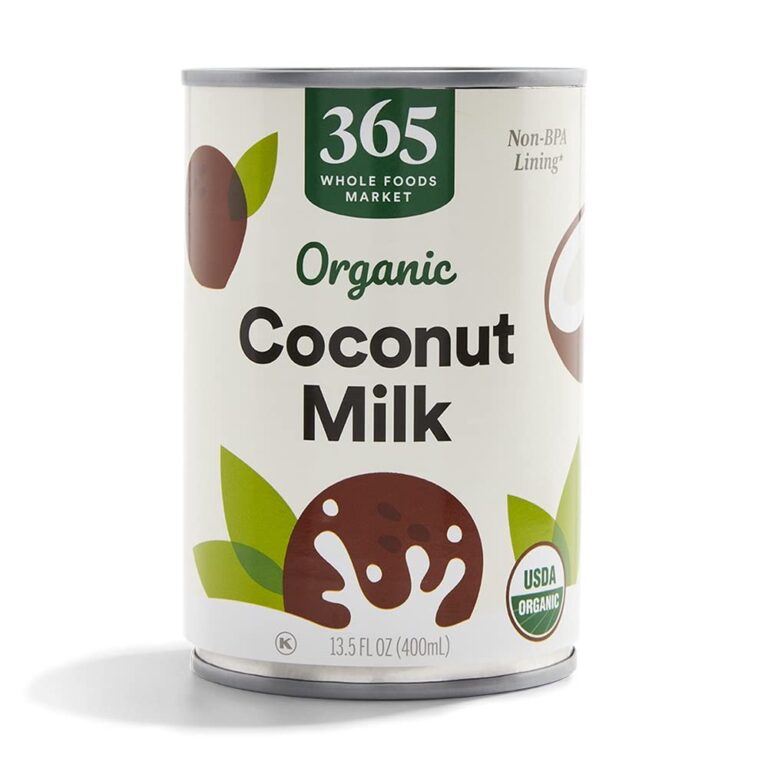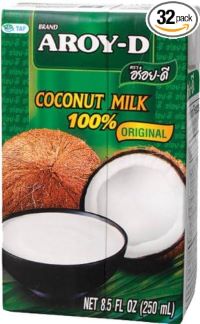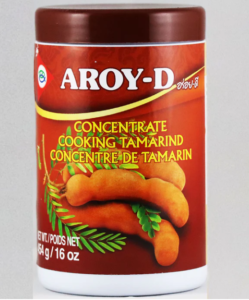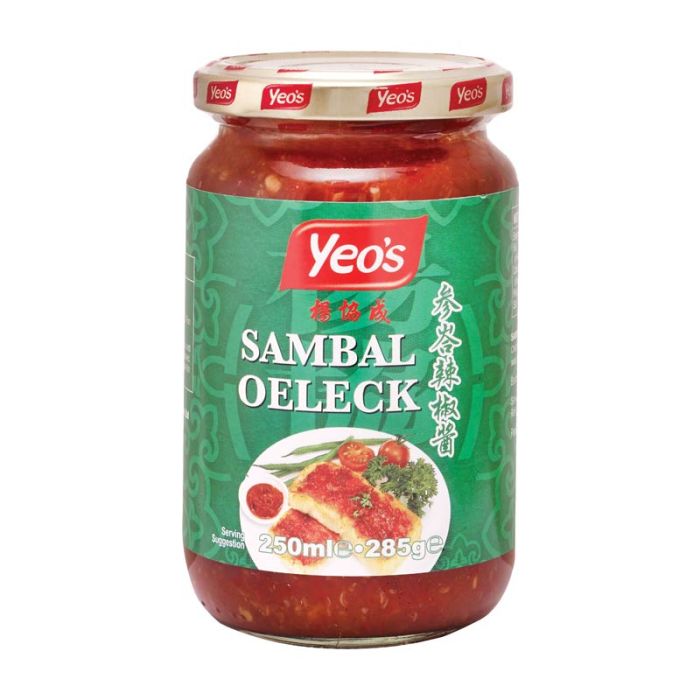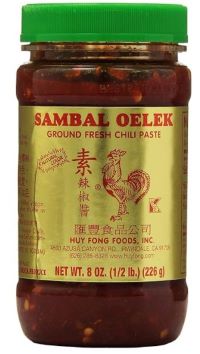Learn Essential Ingredients Needed in Asian Cooking
Embarking on the flavourful journey of Asian cooking can be simultaneously thrilling and overwhelming, especially for those new to the cuisine. To craft delectable and authentic Asian dishes, stocking your pantry with essential ingredients is key. This guide will expertly navigate you through the must-have essentials for cooking Asian cuisine, encompassing sauces, wines, oils, plant milk, and sambal. Whether you’re a novice or a seasoned home cook eager to explore the diverse realms of Chinese, Malaysian, Thai, Indonesian, or Filipino flavours, these essential ingredients serve as your gateway to the enchanting world of Asian culinary delights.
Section 1: Asian Sauces, Wine, and Oils
Chinese Soya Sauce: Chinese soya sauce, known as “jiàngyóu (醬油)” in Chinese, “kicap” in Malay, and “shoyu” in Japan” is a foundational Asian condiment. Soya sauce is considered one of the essential ingredients used in Asian cooking. It comes in various types, including light and dark, each with its unique characteristics. Light soya sauce, also called “Sheng Chou (生抽) ” is excellent for cooking, while dark soya sauce, or “Lao Chou (老抽)” adds colour and depth to dishes. It’s a staple and needed in Chinese, Malay, Thai, Indonesian, and Filipino kitchens, infusing a savoury umami flavour into your creations.
Recommended Brands: Consider Pearl River Bridge, Lee Kum Kee, Healthy Boy Yeo Hiap Seng or Amoy for good quality and authentic light and dark soya sauce.
Tamari: Tamari soya sauce, with its gluten-free composition, adds a mild aroma and a darker colour to your dishes, making it perfect for gluten-free cooking.
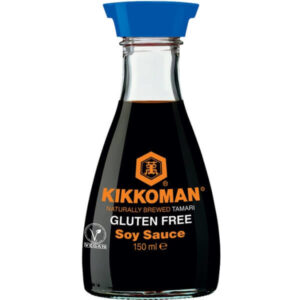
Note: “Lite” soya sauce from Japanese brands like Kikkoman has a milder flavour and lower sodium content, making it less suitable for Chinese recipes. However, it is a suitable choice if you prioritize health considerations.
Sweet Dark Soya Sauce (kicap/ketjap manis): Explore the depth of flavour with sweet dark soya sauce, a thick and aromatic sauce common in Malaysia, Indonesia, and Singapore. Spices such as cinnamon stick, star anise, ginger or garlic are added to create an aromatic flavour in the sauce. It’s perfect for dishes like Malaysian and Indonesian Nasi Goreng and Mee Goreng. It’s also commonly used in satays. The sky is the limit, this Kecap Manis does wonders for rice and noodle dishes and is equally fantastic when added to stir-fries or used in marinades, glazes, soups and barbecue sauces or used as a dipping sauce.
Storage: Soya sauce can last up to three years unopened and up to a year when opened, and stored in a cool, dark place.
Vegetarian Oyster Sauce: Traditional oyster sauce (蚝油, háo yóu) is crafted from oyster extracts, presenting a dark, thick, salty, savoury profile with a subtle fishy aroma and a touch of sweetness.
In contrast, vegetarian oyster sauce (素蚝油, Sù háo yóu) is meticulously prepared using mushrooms, omitting any oyster extracts. Although maintaining the characteristic dark brown hue, saltiness, savoury notes, and light sweetness, it tends to have a slightly thinner consistency compared to its traditional counterpart.
A superb alternative for vegan cooking, vegetarian oyster sauce capitalizes on the meaty essence of mushrooms, imparting umami and sweetness to various dishes.
It has become an essential ingredient and is widely embraced in Chinese, Malay, and Thai cuisines, particularly in Cantonese culinary traditions, it stands as a key component for enhancing the flavours of fried noodles and dim sum.
Recommended Brand: When searching for a vegetarian oyster sauce, several brands offer distinct options catering to different dietary preferences. One notable choice is Oriental Mascot, which, despite its name, uses mushroom extracts instead of oysters in its “Vegetarian Oyster Flavoured Sauce.” This sauce stands out as both soya sauce-free and potentially gluten-free, although consumers should scrutinize the label for the presence of hydrolyzed vegetable protein, which may contain wheat.
Lee Kum Kee is another prominent brand offering a vegetarian stir-fry sauce. Their “Vegetarian Stir-fry Sauce” features a blend of soya sauce, yeast extract, and dried shiitake, providing a savoury and versatile option for various dishes.
Wan Ja Shan takes a unique approach by crafting its vegetarian oyster sauce from soyabeans and shiitake mushroom powder. While rich in flavour, it’s essential to note that this option contains wheat, making it unsuitable for individuals seeking a gluten-free alternative.
For those who appreciate Thai flavours, Healthy Boy produces a Mushroom Vegetarian Sauce using mushroom extract and soya sauce. It’s important to be aware that this particular sauce is not gluten-free, so individuals with gluten sensitivity should consider other options. Overall, exploring these diverse brands allows individuals to find a vegetarian oyster sauce that aligns with their specific dietary needs and taste preferences.
Regular Oyster Sauce (For Non-Vegetarian or Vegan): This luscious, brown sauce originates from concentrated oysters simmered in soya sauce and brine. Renowned for its rich flavour, it serves as an essential versatile cooking ingredient and a condiment when diluted with a touch of oil for vegetables, poultry, and meat dishes. Available in bottles at Chinese grocers and supermarkets, it is advisable to store it in the refrigerator for optimal freshness. Note that the Panda brand may have a more pronounced fishy taste.
Recommended Brand: When it comes to regular oyster sauces, there are several brands in the market to consider.
Lee Kum Kee Premium (LKK) brand, established in 1888, takes pride in its time-honoured tradition. The Lee Kum Kee Premium Oyster Sauce is a testament to this, featuring extracts from the finest oysters based on the original secret recipe. With a legacy spanning over a century, this sauce promises a rich and authentic oyster flavour.
Another noteworthy offering from LKK is the Panda Brand, widely recognized and prevalent in Thai and Chinese restaurants. This oyster sauce provides an affordable alternative while maintaining the quality associated with Lee Kum Kee. It’s important to note that Panda Brand may have a more pronounced fishy taste, catering to specific culinary preferences.
For those seeking a premium culinary experience, the Blue Dragon brand delivers a rich and glossy oyster sauce with a distinct salty flavour. Crafted using Dried Oyster Powder, this sauce positions itself in a higher price range, offering a sophisticated option for those who appreciate fine dining.
Healthy Boy brand, primarily renowned for its soya sauces, has expanded its range to include various sauces, including oyster sauce. Notably, Healthy Boy stands out as the most budget-friendly option among the brands mentioned, providing a cost-effective choice without compromising on flavour.
Storage: Storage is crucial for maintaining the quality of oyster sauce, despite its liquid form. It’s important to note that all oyster sauces have the potential to develop mould over time. Therefore, after opening the sauce, it is recommended to store it in the refrigerator to extend its shelf life.
By refrigerating the oyster sauce, you create a cooler and more controlled environment, inhibiting the growth of mould and preserving the sauce’s freshness. This simple step can significantly contribute to ensuring the longevity and safety of the oyster sauce for future use.
Cooking Wine: Chinese cooking often incorporates wine to enhance flavours. Shaoxing wine, made from fermented glutinous rice, adds a unique touch to dishes. It has become one of the key components of all home and restaurant pantries. Cooking wine can be used for marinating, deglazing, and creating exquisite sauces.
Recommended Brand: Look for Shaoxing wine in Asian liquor stores or substitute it with dry sherry if needed.
Sesame oil: This oil is known as zhīma yóu (芝麻油) in Mandarin or ma yeow in Cantonese, is derived from sesame seeds. It comes in two main varieties: non-toasted and toasted.
There are two Varieties of Sesame Oil. The non-toasted sesame oil type has a light color, similar to vegetable oil, and a more neutral flavor. The toasted sesame oil is richer and darker in color, with a strong, nutty flavor and aroma. It is a key ingredient in Asian and Chinese cooking, enhancing dishes with its distinct taste.
Toasted sesame oil has a low smoke point, which means it burns easily at high temperatures. This makes it unsuitable as an all-purpose cooking oil. Instead, it is typically added during the final stages of cooking or used in:
- Marinades: To infuse a nutty aroma.
- Dressings: To add depth of flavor to salads.
- Sauces: To elevate the overall taste.
Recommended Brands: Kadoya is highly recommended for its purity (not blended) and strong, nutty sesame flavor. Lee Kum Kee is another great option for those seeking quality sesame oil.
Storage: Keep opened sesame oil in the fridge or pantry, where untoasted sesame oil can last up to a year and toasted sesame oil should be consumed within six to nine months.
Storage: Keep opened sesame oil in the fridge or pantry, where untoasted sesame oil can last up to a year and toasted sesame oil within six to nine months.
Section 2: Other Essential Ingredients Pantry Items
Coconut Milk: This rich, creamy liquid is an essential ingredient in various Southeast Asian dishes, from Malaysian curry to Thai green curry. It’s important to use it judiciously, considering its high saturated fat content.
Recommended Brands: Thai Kitchen coconut milk is known for quality and authenticity, offering full-fat and light versions. Aroy-D is popular for preservative-free coconut milk. Native Forest and 365 Everyday Value are often praised for being organic and additive-free. Consider your preferences, and dietary needs, and check reviews before making a choice.
Storage: Canned coconut milk can be kept in a cool, dry place. Once opened, transfer any leftovers to a tightly sealed container in the fridge and use it within 5 to 7 days. Check the label for specific instructions as they may vary between brands. Remember to store coconut milk in the refrigerator at or below 40°F (4°C) and follow any specific storage instructions provided by the manufacturer.
Tamarind Paste: Tamarind paste adds a sweet-sour flavour to numerous Asian dishes like curry and sambal. It’s available in various forms, from paste to concentrate. Thai Food King and Aroy-D are popular.
Storage: Store tamarind paste in the refrigerator, ensuring you use a clean utensil to handle it.
Sambal Oelek: This ground chilli sauce, known for its simplicity, has become a staple in many kitchens. It can be a versatile condiment and an essential ingredient for a range of dishes, both Asian and international.
Recommended Brands: Yeo’s, a prominent Singaporean brand, offers an authentic flavoured Sambal Oelek that is widely available. ABC, Sedap and Cap Ibu are Indonesian brands that produce sambal oelek known for its traditional, flavourful and authentic taste. Other brandsHuy Fong, and Flying Goose can be easily found online.
Storage: Sambal Oelek in an unopened container, it can typically be stored in a cool, dark place, like a pantry or cupboard, for an extended period. Once opened, it’s advisable to store Sambal Oelek in the refrigerator. The cold temperature helps slow down the growth of bacteria and maintain the quality of the sauce. Generally, Sambal Oelek can be refrigerated within 3 to 6 months after opening.
By stocking your pantry with these essential ingredients, you’ll be well-prepared to embark on a flavourful journey through Asian cuisine. In Part 2 of this series, we’ll explore more must-have items that will take your Asian cooking to the next level.

